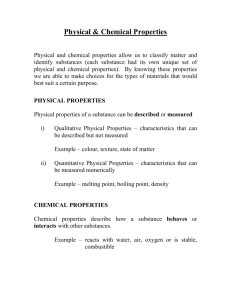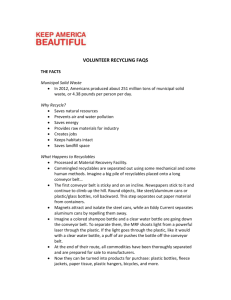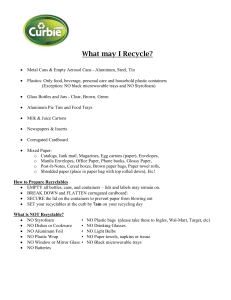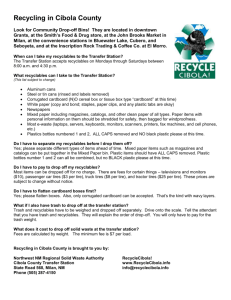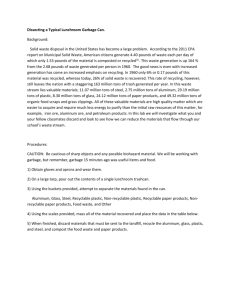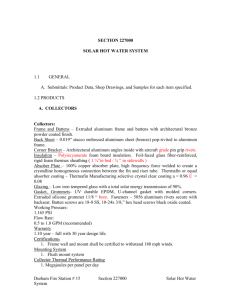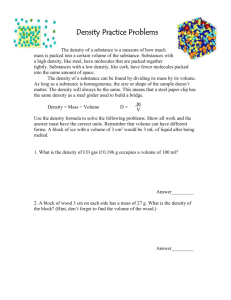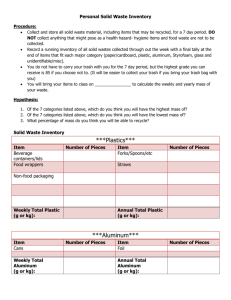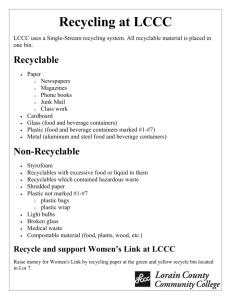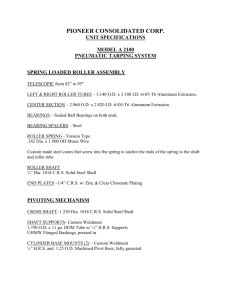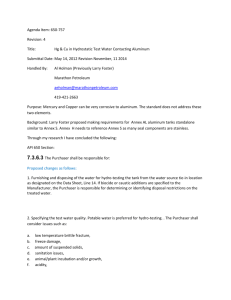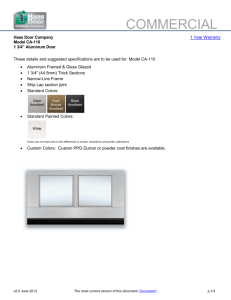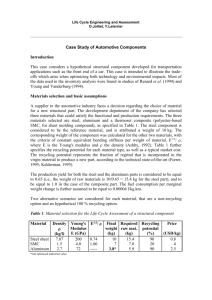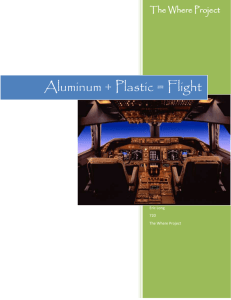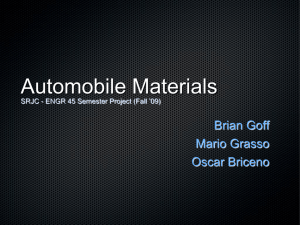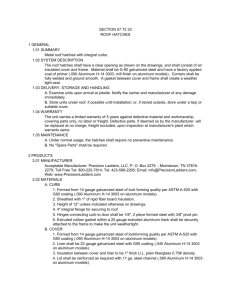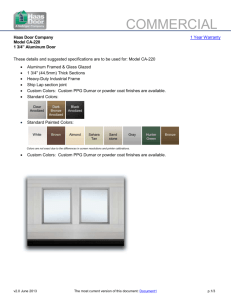Physical and Chemical Properties worksheet
advertisement
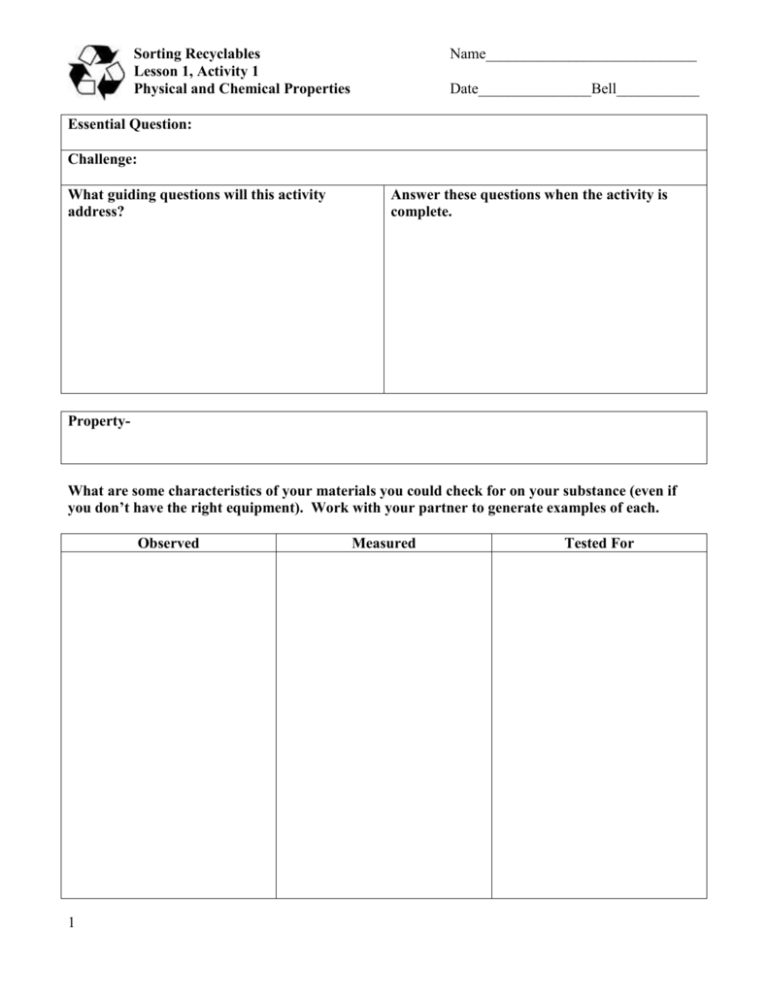
Sorting Recyclables Lesson 1, Activity 1 Physical and Chemical Properties Name____________________________ Date_______________Bell___________ Essential Question: Challenge: What guiding questions will this activity address? Answer these questions when the activity is complete. Property- What are some characteristics of your materials you could check for on your substance (even if you don’t have the right equipment). Work with your partner to generate examples of each. Observed 1 Measured Tested For Examples of Physical Properties Examples of Chemical Properties Investigating properties of unknown materials. Your team will investigate the properties of 4 different unknowns. Record observations in the columns, be as specific as possible. When testing with the four liquids, use your straw-scoop to place a small amount in the well, and add a few mL of liquid with the pipette and stir with a toothpick. When you have finished all of your observations, determine which tests/observations you think represent physical properties, and which you think represent chemical properties. How do you know? Unknown Color Shape of With particles vinegar (microscope) With With iodine water With Cabbage Juice (pH) Magnetic IDENTIFY SUBSTANCE A B C D Chemical or physical Property How do you know? Your group must come up with a good definition of physical and chemical properties. This must include how you know you have tested for a physical or chemical property. A physical property is A chemical property is 2 After your unknowns have been identified, use this information – along with your data to answer the questions below. 1. Which properties are least useful in identifying your unknowns? Why? 2. If you had a mixture of baking soda and salt, what property would allow you to recover the salt, unchanged? Why? Is this a chemical or physical property? 3. Would this method allow you to recover the baking soda? Why or why not? 4. Soup cans often come to a recycling facility with paper labels on the outside. The goal of the facility is to recover the steel can without the paper or glue. The paper label will not be recycled. Would it be better to use a chemical property (paper burns, steel cans do not), or a physical property (paper is soluble in water, steel is not) to accomplish this? Why? 5. Aluminum scraps need to be separated from number 2 (HDPE) plastic scraps. Both materials are highly recyclable, and need to be recovered. Would it be better to use a chemical property (Aluminum reacts with acid, plastic does not) or a physical property (plastic floats in water, aluminum does not) to separate these materials? Why? 6. In general, do you think it is more useful to use physical or chemical properties to separate materials that can be recycled from each other? Why? 3 7. In general, do you think it is more useful to use physical or chemical properties to separate contaminants, or non-recyclables from recyclables? Why? 8. Complete answers to the guiding questions at the beginning of this worksheet. Sorting Recyclables Lesson 1, Activity 1 Physical and Chemical Properties Formative Assessment 1. Name____________________________ Date_______________Bell___________ The following were observations in a student’s lab journal. Was the student observing a physical or chemical property? What actual property are they observing? How do you know? Observation Physical or Chemical? Property observed? How do you know? Ice changed to water if you let it sit on the counter. Aluminum foil is smooth and silver colored A hamburger cooks on the grill. Steel wool burns if you light it with a match Chocolate gets really hard when you put it in the freezer Milk gets lumpy if you add lemon juice to it. Sugar, flour and eggs combine to make a delicious cake when heated. My desk is 28 inches tall The bumper on my car is all rusted. 2. The following all represent physical changes (changing the physical property of a material). A piece of paper is cut with scissors. Candle wax melts to a liquid. The mass of a lump of clay is reduced when a piece is removed Salt is dissolved in water. Which of the following is true about a physical change? a. New substances or materials are produced during a physical change. b. New substances are NOT produced, the substances are the same after a physical change. 3. To observe a chemical property, a chemical change must occur (new substances produced). To see if a piece of paper has the chemical property of combustability (will burn in oxygen), you must actually try to burn it, producing carbon (ash), water vapor, carbon dioxide – the material is no longer paper. Think about the lab, and the chemical properties and changes here. What are some clues, observations that might indicate that a chemical change has occurred? 4
